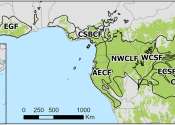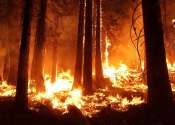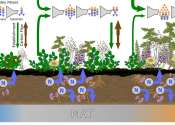Wildfires in wet African forests have doubled in recent decades, large-scale analysis finds
A new study presents the first large-scale analysis of fire patterns in West and Central Africa's wet, tropical forests. The number of active fires there typically doubled over 18 years, particularly in the Congo Basin. The ...









